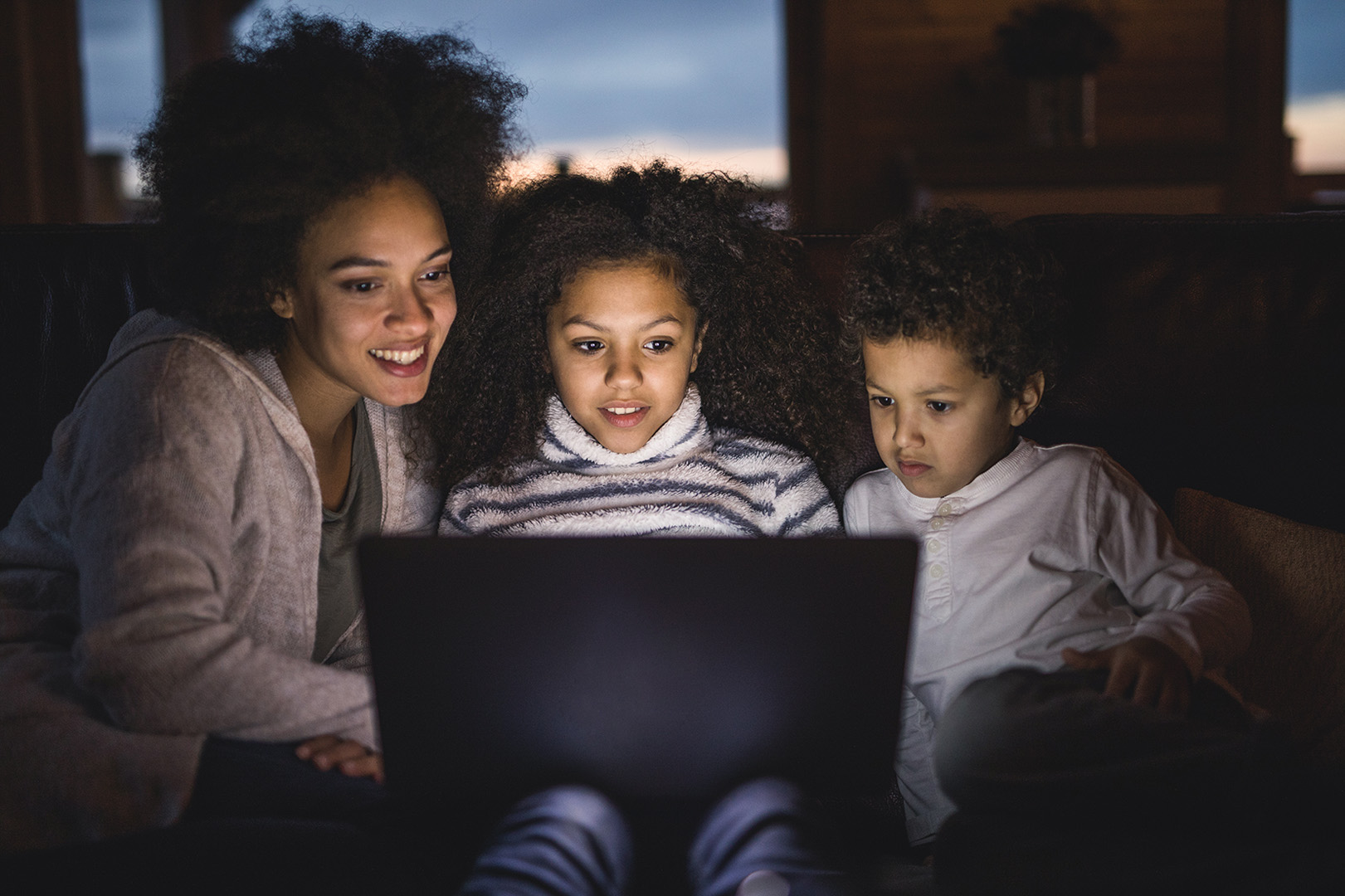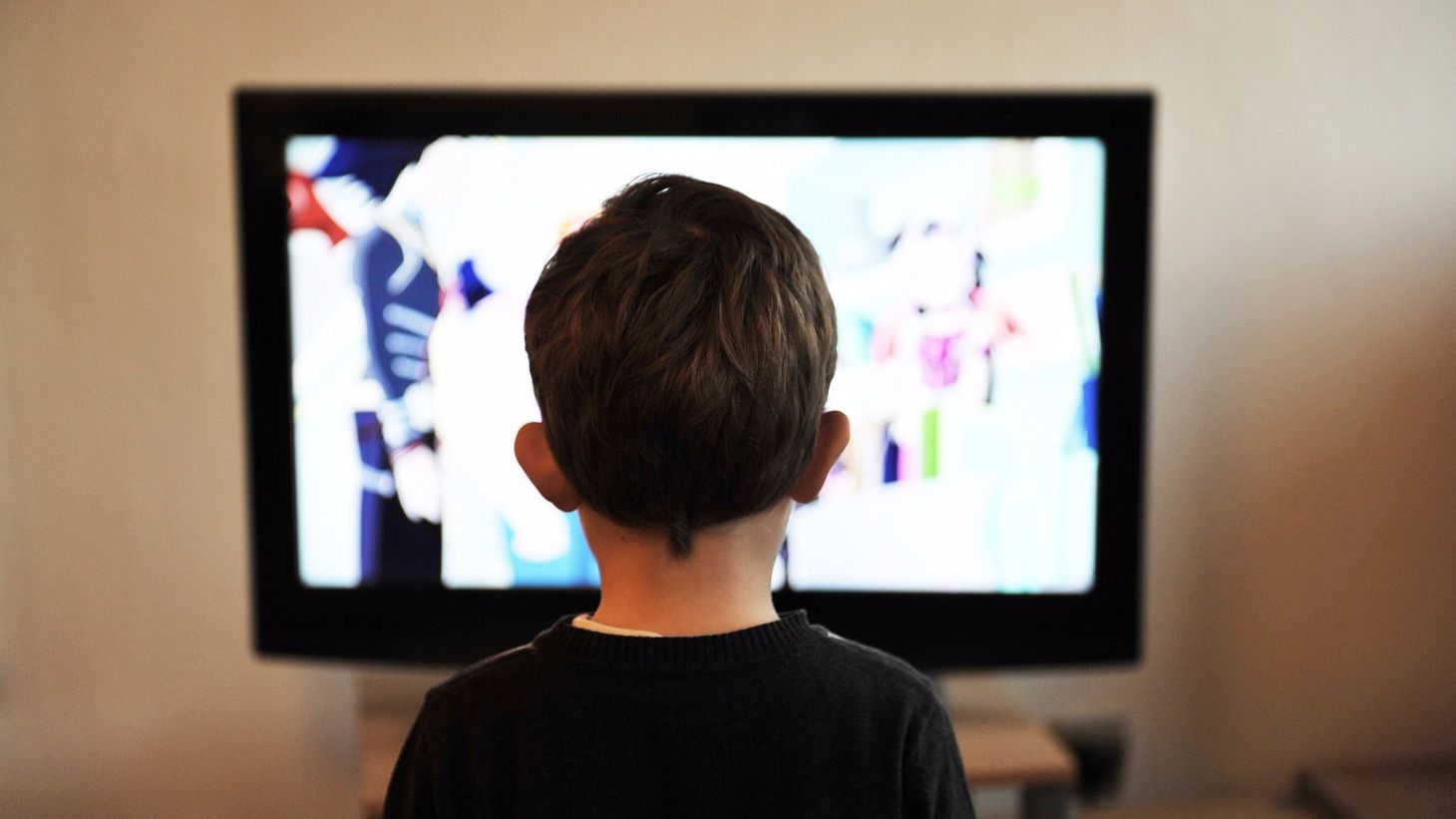What is the recommended screen time for children and can you use technology in a healthy way?
Parents have long been warned about the pitfalls of screen time for children: negatively impacting on the development of literacy, social and gross motor skills, as well as contributing to obesity, among others.
What is the appropriate amount of screen time for kids? And is screen time really that bad? Are you tired of feeling guilty for letting your kid play with an iPad or watch a show on Netflix? Let’s look at some healthy ways to manage our children’s screen time—and not feel guilty about it.
Recommended screen time for children
Officially, this is what both the American Academy of Pediatrics and the World Health Organization recommend:
| Age (years) | Recommended screen time (per day) |
| Under 2 | Not recommended |
| 2–5 | Not more than one hour |
| 5–10 | Not more than 1.5 hours |
| 10–13 | Not more than 2 hours |
Of course, like everything else, sticking to the recommended amount of screen time can be challenging. And while we may succumb to handing the device over to our children, it doesn’t help to allay any feelings of guilt we may have.
Read: How to make screen time work for your preschooler
Dr Kristy Goodwin is a digital wellbeing and productive speaker, researcher and author. The mum of three is all-too-familiar with what she terms “techno-guilt”: The pangs of guilt experienced when we hand over the iPad or gaming console, or when we let our kids watch another clip on YouTube. She says plenty of mums suffer unnecessarily from it—and she knows why.
“We are the first generation of parents navigating the digital terrain with our kids and we therefore have no frame of reference. Today’s kids often learn to tap, swipe and pinch before they’ve learnt to ride a bike or grip a pencil. This is very different to the analogue childhoods we experienced,” she says.
“Most of us spent our childhoods unplugged and staring at the sky, not a screen. So our natural tendency is to worry about a childhood filled with screen time, because it’s very different to the childhood we experienced. We assume that because it’s different, it must be ‘bad’ for them. That’s simply not the case.”
Not the case? So is screen time for kids actually okay?
The difference between good screen time and bad screen time
As with most things in life, it’s difficult to give a blanket statement and declare something “good” or “bad”. The problem when it comes to screen time for kids, however, is that we may have erred too much on being cautious, to the extent of becoming alarmist.
“We’re bombarded by news reports and headlines that claim screen time is toxic and harmful for kids. Headlines that suggest screens are akin to ‘digital cocaine’ (such as ‘Giving your child a smartphone is like giving them a gram of cocaine, says top addiction expert’) are misleading and cause unnecessary moral panic. We have blog posts and social media posts that (ironically) perpetuate these neuro-myths about kids, teens and screens,” says Dr Kristy.
“As a researcher in this field, I want to assure you that this is not what the neuroscience tells us at this point in time. These headlines are inflammatory, incite parental panic and over-inflate the research findings or misrepresent what the statistics and data actually reveal. (Most of the research that we have with kids, teens and screens doesn’t prove causation. Most of the studies available at present show a correlation between screens and adverse development and health impacts. This is very different to research that “proves” that technology is the cause of these issues).
“Sadly, studies showing the positive impact of technology and its effect on kids and teens is often overlooked by the media and doesn’t make for good clickbait. So it’s little wonder that mums are left riddled with techno-guilt.”
How to manage screen time for kids
“As mums, we need to stop obsessing over how much time our kids are plugged in to devices or worrying that we’re doing our kids a disservice by handing over devices. Instead, we need to help our kids develop healthy technology habits,” says Dr Kristy.
“Whether you love it or loathe it, the reality is that your kids and teens will inherit a digital future, so they need to learn how to use technology in sustainable and supportive ways. Banning devices or limiting their access won’t allow them to develop these fundamental skills.”
“Parents need to establish firm, consistent boundaries about how much time their kids spend with digital devices, but they also need to consider other essential questions that go beyond simply using time as the only metric. Parents need to establish boundaries around what, when, where and how their kids use screens, to ensure that their digital habits are healthy and not harmful. And in doing so, they can put an end to their guilt.”
So what does this look like?
1. Quality over quantity
What kind of content are your kids consuming? It’s more important to consider the quality of that content, rather than the quantity of their screen time. There’s a big difference between Skyping with an overseas relative for five hours and playing Candy Crush for the same amount of time.
The use of high quality, educational digital content has been shown to support kids’ and teens’ learning. There is a wealth of developmentally-appropriate learning apps, TV shows, games (yes, gaming can be a brilliant learning platform), programs and interactive toys that have been specifically designed to foster kids’ learning and development.
The Office of the eSafety Commissioner, Common Sense Media and the Australian Council on Children and the Media offer reviews of apps, TV programs, games and movie content suitable for children and teens. Ensuring your child has access to age-appropriate digital content can help parents ditch the techno-guilt.
At the same time, Dr Kristy advises to consider the displacement effect: If their basic developmental needs are being met, then we can allow screen time and not be riddled with techno-guilt—the time they’re having with technology isn’t interfering with their basic developmental needs.
2. Model and offer something better
How much time do you spend on electronic devices? People may be concerned about kids who spend too much time on their phones and tablets but plenty of adults do the same thing. There are a number of free apps that can monitor your phone usage. Try monitoring yours for a week and you might be surprised at how big your digital footprint is.
At the same times, our kids may be spending time on phones and tablets because they’re bored and looking for something entertaining. It’s not enough to take away their devices—offer them an alternative. Maybe it’s a family day out to the beach. Maybe it’s a visit to the pool. Maybe it’s a camping trip somewhere remote and without reception. Just as long as it’s an opportunity for you to spend some quality time together—without looking at screens.
3. Establish boundaries
According to Dr Kristy, the 60–90 minutes before sleep time (or nap time if you still have a little one) should be screen-free, as the blue light emitted from tablet devices and smartphones delays the onset of sleep because the body can’t produce sufficient melatonin, the sleep hormone.
Before bedtime, audio books or music are much better alternatives. Rapid-fire, fast-paced screen action should also be avoided before childcare or school, as it overloads the sensory and nervous systems, making it difficult for students to pay attention in class. If parents enforce boundaries around when their kids can access screens, we can drop the guilt.
4. Identify no-go tech zones
Dr Kristy recommends designating specific areas in the house as tech-free spaces. These are:
- Bedrooms
- Meal areas (eating in front of a screen displaces opportunities for language and social interaction, and screen use with meals has been shown to promote mindless eating in children)
- Play areas
- Bathrooms
- Cars (for short trips)
“This helps to ensure kids’ and teens’ online safety (kids are very unlikely to be chatting to an online predator or sending nude photos when they’re snuggled up next to you on the lounge) and alleviates the pangs of guilt parents feel when they hand over the gaming console or touchscreen device.” explains Dr Kristy.
Screen time for kids: What to avoid

While it does look like there are no hard and fast rules when it comes to screen time, and the emphasis on screen time should be on quality and not quantity, there are still some things parents need to watch out for.
1. Excessive screen time
“It’s a simple opportunity cost—if kids are spending too much time with pixels, it limits the available time they have to meet their essential developmental priorities,” says Dr Kristy.
“There’s no denying research confirms that excessive screen time can compromise kids’ and teens’ health and wellbeing. For example, studies consistently show that ‘too much’ screen time can adversely impact on kids’ and teens’ sleep, physical movement levels, language and social skills, as well as their fine and gross motor skills.”
Collett Smart, Mums At The Table resident psychologist puts it this way: “Instead of banning screen time, we need to help our children find a healthy balance” and this she says, involves setting a clear screen time plan and encouraging children to spend the same amount of time outdoors as they did on a screen.
2. Watch out for eye strain
“Australian children are presenting more commonly to optometrists with a range of visual problems related to screen use,” says optometrist and head of the University of Canberra’s Discipline of Optometry, Dr Nicola Anstice. “Evidence from studies indicates dry eye and digital eye strain is an issue in kids today and prevalence of dry eye in children is higher than ever.”
The type of screens used, viewing distances, how many hours a day children use digital devices and whether they multi-screen, all have an impact, and concurrent screen use is associated with a higher incidence of digital eye strain symptoms. Symptoms of digital eye strain include weakness or fatigue of the eye, pain in the eye, headaches, focusing problems, dry eye, a gritty feeling in the eye, crusting on eyelids, feeling like there’s something in your eye, redness, blurry vision and light sensitivity.
“When looking at digital screens on phones, computers, iPads and more, we often don’t do a full blink and are more likely to do a partial blink than if reading hard copy material, resulting in reduced ocular surface lubrication,” she explains.
The solution? Optometry Australia’s Luke Arundel refers to the 20-20-20 rule: “It’s important to take a 20 second break from screens every 20 minutes and look at an object at least 20 feet away (six metres, or just into the distance) for around 20 seconds.”
3. Early exposure
“Prematurely dunking kids in the digital stream (such as handing your smartphone over to your toddler every single time they throw a tantrum or declare that they’re bored, or allowing your tween to have an Instagram account before they’re 13 years of age) can be detrimental to their ongoing development and wellbeing,” warns Dr Kristy.
“The neuroscience confirms that young children can’t learn from screens until they’re somewhere between 18 and 36 months of age, as their brain can’t translate what’s on a 2D screen and match it to the 3D world. We also know that social media places incredible demands on young people. Introducing them to it too early can place them at unnecessary risks and may adversely impact their mental health.”
How helpful was this article?
Click on a star to rate it!
4.8 / 5. 4
Be the first to rate this post!
Mums At The Table
Related posts
Subscribe
Receive personalised articles from experts and wellness inspiration weekly!

